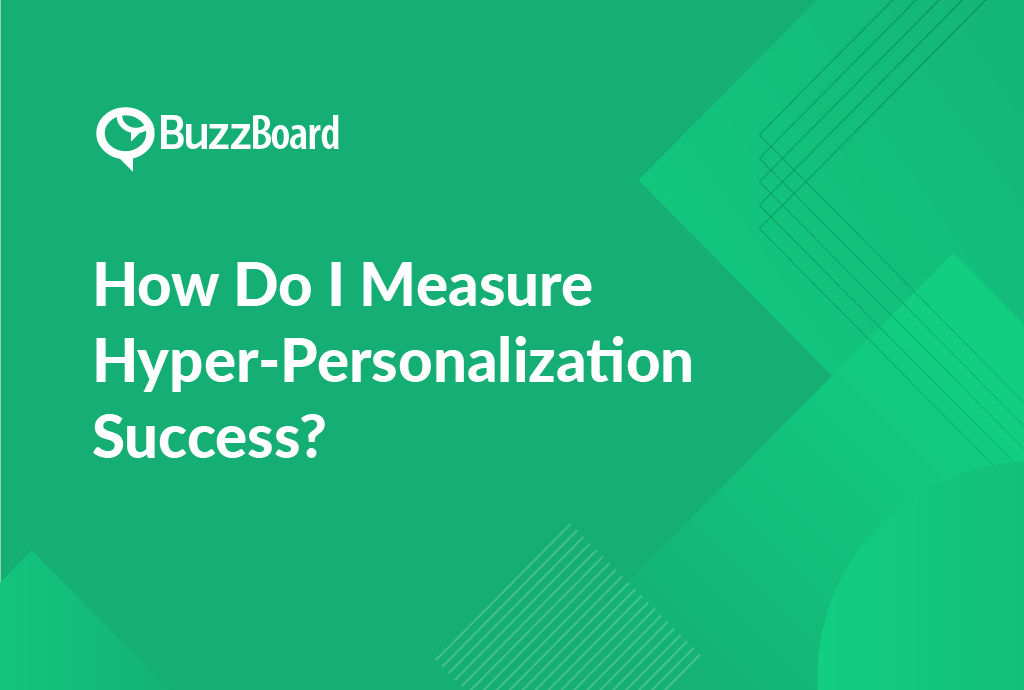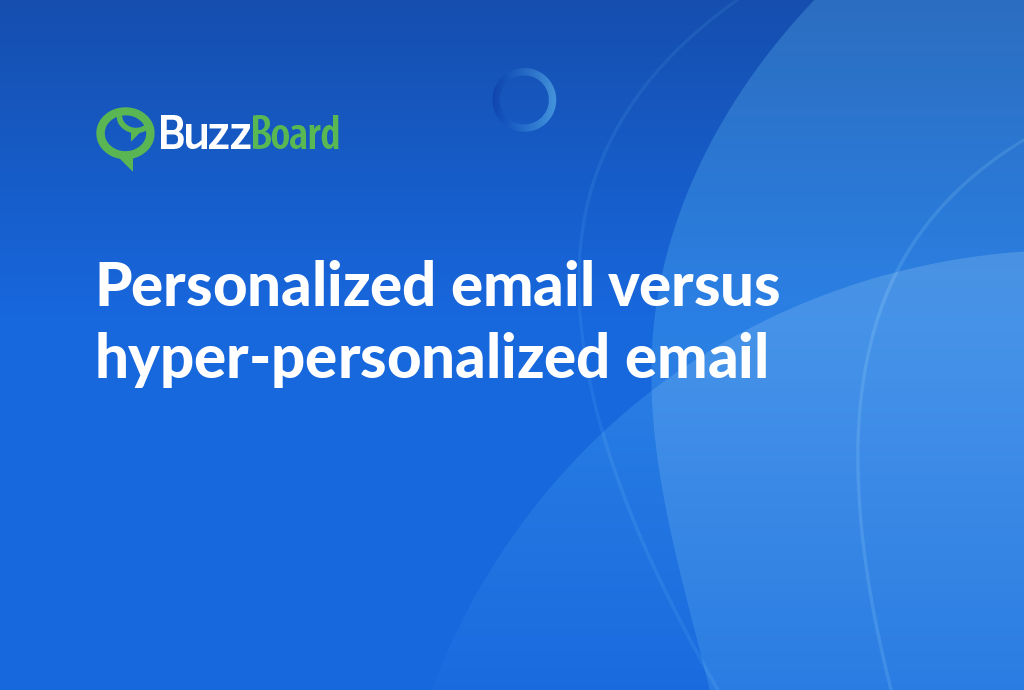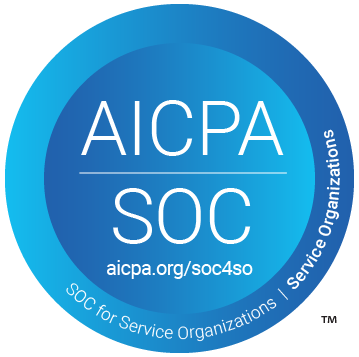Summary
Measuring the success of hyper-personalization requires a data-driven approach. Start by tracking key performance indicators (KPIs) such as customer engagement, conversion rates, and revenue growth. Additionally, monitor metrics like click-through rates, open rates, and click-to-open rates for email marketing campaigns. Analyze customer feedback and sentiment analysis to gauge the effectiveness of personalized content. Use A/B testing and experimentation to validate the impact of hyper-personalization on business outcomes. By regularly monitoring and optimizing these metrics, businesses can ensure the success of their hyper-personalization strategy and drive long-term growth.
Understanding the concept of hyper-personalization
Understanding the concept of hyper-personalization is integral for sales professionals in digital marketing agencies. This strategy offers a competitive edge, leveraging advanced technologies and data analysis to deliver individualized customer experiences. Hyper-personalization extends well beyond simply customizing an email recipient’s name; it involves comprehending and anticipating customer behaviors and preferences.
Hyper-personalization can be achieved through customer journey optimization. This process entails analyzing every customer touchpoint with your brand – from the initial engagement to the final sale. The objective is to tailor each interaction to be as relevant and personalized as possible, thereby enhancing customer engagement metrics.
Personalization has become a crucial aspect of any successful marketing strategy. One effective method to achieve this is through A/B testing, which involves comparing different versions of a webpage or email to identify which version performs better. This approach enables businesses to target specific audiences with the most enticing content, thereby boosting conversion rates and customer satisfaction.
However, A/B testing is just the starting point. To truly maximize personalization relevance, it’s essential to incorporate best practices into your strategy. This includes customer segmentation based on behaviors, demographics, and preferences. By segmenting your audience, you can create targeted content that resonates with each group, leading to increased engagement and conversion rates.
Another crucial aspect of personalization is leveraging real-time data. This involves using data and analytics to understand customer behavior and preferences in real-time, allowing you to adapt your content and messaging accordingly. For instance, if a customer has abandoned their shopping cart, you can send them a personalized email with a special offer to encourage them to complete their purchase.
In addition to A/B testing and customer segmentation, another key aspect of personalization is the use of machine learning algorithms. These algorithms can analyze customer data and behavior to predict their preferences and interests, allowing you to create highly targeted and personalized content.
To take your personalization strategy to the next level, it’s essential to stay informed about the latest industry practices and trends. This includes staying up-to-date with the latest technologies and tools, as well as best practices for data collection and analysis.
Hyper-personalization is not a one-off strategy, but rather a continuous process of evolution, learning, and adaptation. It requires ongoing monitoring and analysis of customer behavior and preferences, as well as continuous refinement of your personalization approach.
By incorporating A/B testing, customer segmentation, real-time data, and machine learning algorithms into your personalization strategy, you can create highly targeted and personalized experiences that drive engagement, conversion rates, and customer satisfaction. Remember to stay informed about the latest industry practices and trends, and be willing to adapt and evolve your approach as needed.
Some key takeaways to keep in mind:
- A/B testing is a powerful tool for identifying which content and messaging resonates with your audience
- Customer segmentation is essential for creating targeted content that resonates with each group
- Real-time data is crucial for understanding customer behavior and preferences
- Machine learning algorithms can help predict customer preferences and interests
- Hyper-personalization is a continuous process that requires ongoing monitoring and analysis of customer behavior and preferences
- Staying informed about the latest industry practices and trends is essential for staying ahead of the curve
By following these best practices and staying informed about the latest industry trends, you can create highly effective personalization strategies that drive results and set your business apart from the competition.
The role of customer journey optimization in hyper-personalization
Hyper-personalization has emerged as a crucial strategy for businesses seeking to build strong, meaningful connections with their customers. This approach focuses on delivering content, products, and services that are tailored to individual customers, taking into account their unique needs, desires, and behaviors. At the heart of this strategy lies customer journey optimization, an essential element that enables businesses to create a seamless and personalized experience for their customers.
Customer journey optimization is the process of mapping the various touchpoints a customer has with a brand, from initial awareness to post-purchase support. By identifying opportunities to enhance the customer experience at each stage, businesses can create a tailored journey that meets the customer’s evolving needs and preferences. This involves analyzing customer engagement metrics, such as click-through rates, conversion rates, and customer satisfaction scores, to gain valuable insights into customer behavior, preferences, and demands.
One effective means of hyper-personalization is the execution of A/B testing for personalization. This data-driven technique allows businesses to compare the performance of two different approaches, such as different product recommendations or email campaigns, to determine which one resonates more with their audience. By analyzing the results of A/B testing, businesses can pinpoint the most effective engagement methods and make data-driven decisions to optimize their customer journey.
However, understanding personalization best practices is vital for successful businesses. Some typical strategies include:
- Providing personalized recommendations: By leveraging customer data and preferences, businesses can offer tailored product recommendations that meet the customer’s unique needs and interests.
- Delivering timely and relevant content: Businesses can use customer data to deliver content that is relevant to the customer’s interests and needs, at the right time and through the right channel.
- Streamlining customer journeys: By simplifying and streamlining the customer journey, businesses can reduce friction and make it easier for customers to achieve their goals.
To exploit the potential of hyper-personalization, businesses must prioritize customer journey optimization. Achieving this requires an understanding of customer needs and preferences, the effective application of A/B testing, and adherence to personalization best practices. By leveraging customer journey optimization, businesses can create a personalized experience that fosters deeper connections with customers, nurtures customer loyalty, and ultimately drives business growth.
In addition to the benefits mentioned above, customer journey optimization can also help businesses to:
- Reduce churn rates by identifying and addressing customer pain points
- Increase customer retention by providing a personalized experience that meets their evolving needs
- Improve customer satisfaction by delivering a seamless and efficient customer journey
- Enhance customer loyalty by recognizing and rewarding customer loyalty and advocacy
- Drive revenue growth by offering personalized products and services that meet customer needs and preferences
Hyper-personalization is a powerful strategy that requires a deep understanding of customer needs and preferences, as well as the effective application of A/B testing and personalization best practices. By prioritizing customer journey optimization, businesses can create a personalized experience that fosters deeper connections with customers, nurtures customer loyalty, and ultimately drives business growth.
How A/B testing for personalization can measure success
Businesses of all sizes must prioritize hyper-personalization in their marketing efforts to stay ahead of the competition. One crucial aspect of customer journey optimization is A/B testing for personalization, a method that enables and quantifies the effectiveness of personalized marketing strategies.
A/B testing for personalization involves creating two or more versions of a single webpage, email, or advertisement, and then directing different audience segments to each version. By measuring the performance of each version in terms of customer engagement metrics, businesses can pinpoint the type of content and design that resonates best with their target audience. This data-driven approach allows companies to make informed decisions about what kind of personalization best serves their audience, ultimately enhancing customer journey optimization and bolstering customer engagement metrics.
Through A/B testing, businesses can experiment with various design elements, calls-to-action, and content types to determine what works best for their intended demographic. For instance, a local carpentry store may find that a specific image or headline resonates better with their target audience, while a high-end uptown boutique may discover that a particular font or color scheme is more effective. By identifying these preferences, businesses can tailor their marketing efforts to better meet the needs and interests of their target audience, increasing the likelihood of successful engagement.
However, A/B testing for personalization is not a one-and-done process. For optimal results, companies must frequently track, measure, and enhance their strategies. The objective is to continually improve the customer journey, making it as personalized as possible, and as a result, secure long-lasting, profitable customer relationships.
Hyper-personalization represents the future of customer interaction, and businesses that fail to adapt may struggle to remain competitive. To stay ahead of the curve, companies must be willing to invest time and resources into developing and refining their personalization strategies.
For businesses looking to effectively utilize A/B testing for personalization, it’s essential to have a comprehensive understanding of the process. This includes:
- Defining clear goals and objectives for A/B testing
- Identifying the target audience and their preferences
- Creating multiple versions of the webpage, email, or advertisement
- Directing different audience segments to each version
- Measuring and analyzing the performance of each version
- Refining and iterating on the testing process based on results
By following these steps, businesses can harness the power of A/B testing to create highly personalized marketing campaigns that drive engagement, conversion, and loyalty.
For further valuable insights on personalization best practices, customer journey optimization, and other pertinent subjects, please visit our other informative blog posts. Remember, in the digital environment, knowledge is power, and informed decisions pave the way to successful engagements.
A/B testing for personalization is a critical component of customer journey optimization, and businesses that fail to adopt this strategy may struggle to remain competitive in today’s digitally-driven market. By embracing A/B testing and continually refining their personalization strategies, businesses can create highly effective marketing campaigns that drive engagement, conversion, and loyalty.
Examples of successful hyper-personalization strategies
The advent of hyper-personalization has transformed the way businesses interact with their customers, enabling them to tailor their experiences to an unprecedented level of customization. By leveraging a fusion of data collection, artificial intelligence, and machine learning, companies can now create personalized experiences that cater to individual preferences, behaviors, and needs.
One exemplary case of hyper-personalization is Starbucks, which has mastered the art of collecting and analyzing customer data to deliver tailored experiences. Through their mobile app, Starbucks collects data on customers’ preferences and purchase history, allowing them to provide personalized recommendations. Moreover, they adjust these suggestions based on the user’s location and current weather, demonstrating a deep understanding of their customers’ needs and preferences. This approach exemplifies customer journey optimization, where data drives a personalized brand-customer relationship that fosters loyalty and engagement.
Amazon, a pioneer in e-commerce, has also made significant strides in hyper-personalization. Their personalized product recommendations, which account for one-third of their sales, are a testament to the power of machine learning in customer engagement. By analyzing shopping behavior, comparing it with that of others, and suggesting products accordingly, Amazon has created a seamless and intuitive shopping experience that anticipates customers’ needs before they are even communicated.
Netflix, a leader in streaming entertainment, has also leveraged hyper-personalization to promote their content. Rather than simply suggesting movies or series based on past viewing, Netflix tailors visuals of the same show or movie based on individual user preferences, a method of A/B testing for personalization. This approach not only enhances the user experience but also provides valuable insights into customer behavior and preferences.
However, as hyper-personalization continues to evolve, it is essential to remain vigilant regarding privacy issues. As consumers become increasingly sensitive to potential data misuse, businesses must prioritize reliable data protection measures to ensure transparency and trust. This includes implementing robust data management practices, obtaining explicit consent from customers, and providing clear information about data collection and usage.
To effectively harness the power of hyper-personalization in digital marketing, it is crucial to understand its intricacies and stay up-to-date with the latest developments. This requires a comprehensive understanding of data collection, artificial intelligence, and machine learning, as well as the ability to integrate these technologies into marketing strategies.
For businesses looking to unlock the full potential of hyper-personalization, we recommend a comprehensive guide to effective hyper-personalization techniques. This guide provides actionable insights and best practices for leveraging hyper-personalization to drive customer engagement, loyalty, and revenue growth.
The combination of technology and marketing is key to propelling businesses toward remarkable success. By embracing hyper-personalization and prioritizing customer experience, companies can create a competitive advantage that drives long-term growth and profitability.
Navigating through the challenges and benefits of hyper-personalization
Hyper-personalization, a rapidly emerging concept, has the potential to revolutionize customer journey optimization strategies, but it also poses significant challenges for salespeople at digital marketing agencies. To effectively navigate this new landscape, it is crucial to understand the top personalization practices that enhance seamless interaction with small and local businesses.
One of the primary challenges in hyper-personalization is the gathering and analyzing of relevant data, such as customer preferences, behaviors, and other vital customer engagement metrics. This requires a deep understanding of customer needs and preferences, as well as the ability to collect and analyze large amounts of data. However, executing effective A/B testing for personalization can mitigate this issue substantially. A/B testing involves comparing two webpage versions to determine which performs better, allowing salespeople to identify what resonates with customers and gain a deeper understanding of their preferences.
Another significant benefit of hyper-personalization is its ability to enable salespeople to interact with customers and clients on a more personalized level. When customers receive brand interactions tailored to their preferences, they are more likely to engage with the brand and become loyal customers. Hyper-personalization also creates avenues to target accurate demographics, allowing businesses to focus their resources where they are most likely to attain the desired engagement.
Moreover, hyper-personalization enables salespeople to continually refine their approach, as clients increasingly demand marketing agencies to supply the most relevant, individualized content. This requires a high level of adaptability and the ability to stay up-to-date with the latest trends and technologies. Salespeople must be able to leverage data and analytics to inform their marketing strategies and make data-driven decisions.
To succeed in the era of hyper-personalization, salespeople must possess a range of skills, including:
- Data analysis: The ability to collect, analyze, and interpret large amounts of data is crucial for understanding customer preferences and behaviors.
- Content creation: Salespeople must be able to create high-quality, personalized content that resonates with customers.
- Storytelling: The ability to craft compelling stories that connect with customers on an emotional level is essential for building strong relationships.
- Adaptability: Salespeople must be able to adapt quickly to changing customer needs and preferences.
- Communication: Effective communication is critical for building trust and rapport with customers.
Hyper-personalization is a rapidly emerging concept that has the potential to revolutionize customer journey optimization strategies. While it poses significant challenges for salespeople at digital marketing agencies, it also offers numerous benefits, including the ability to interact with customers on a more personalized level, create targeted demographics, and continually refine marketing strategies. To succeed in this era, salespeople must possess a range of skills, including data analysis, content creation, storytelling, adaptability, and communication.
Conclusion
In conclusion, measuring the success of hyper-personalization efforts is crucial to understanding its impact on customer engagement and conversion rates. By tracking key metrics such as click-through rates, conversion rates, and customer lifetime value, businesses can gain valuable insights into the effectiveness of their hyper-personalization strategies. Additionally, using A/B testing and experimentation can help identify areas for improvement and optimize the personalization process.
It’s also important to note that hyper-personalization is not a one-size-fits-all solution, and what works for one business may not work for another. Therefore, it’s essential to regularly review and adjust the metrics used to measure success, as well as the personalization strategies themselves, to ensure they remain aligned with business goals and customer needs.
By following the steps outlined in this article, businesses can effectively measure the success of their hyper-personalization efforts and make data-driven decisions to drive continued growth and improvement. By prioritizing customer-centricity and using data to inform personalization strategies, businesses can create a competitive advantage and build strong, lasting relationships with their customers.









